#paula'schoiceexfoliant
Explore tagged Tumblr posts
Text
Best Skin Care Kits For Men & Women - Paula's Choice
Our skin care kits for men & women include kits and travel sets for every skin type and concern. Paula's Choice Skin Care Kits Only at Official Online India Store.
Paula's Choice Skin Care kits are thoughtfully curated solutions designed to address diverse skin concerns and simplify skincare routines. These kits combine science-backed formulations with high-quality ingredients, offering targeted solutions for issues like acne, aging, dryness, and sensitivity. Whether you're new to skincare or looking to streamline your regimen, these kits are a perfect starting point.
Each Paula's Choice kit typically includes a selection of complementary products, such as cleansers, exfoliants, serums, and moisturizers, all formulated without added fragrances or irritants. The brand's commitment to transparency and research ensures that every product is effective and suitable for various skin types.
Popular options include the Bha Kit for face & body, Niacinamide + BHA duo, Exfoliation Kit etc. These kits not only deliver noticeable results but also educate users about the importance of using synergistic products for optimal skin health.
Perfect for gifting or personal use, Paula's Choice Skin Care kits make achieving radiant, healthier-looking skin accessible and straightforward. Their dedication to quality and efficacy ensures that every kit embodies the brand’s ethos: Smart, Safe, and Effective Skincare.



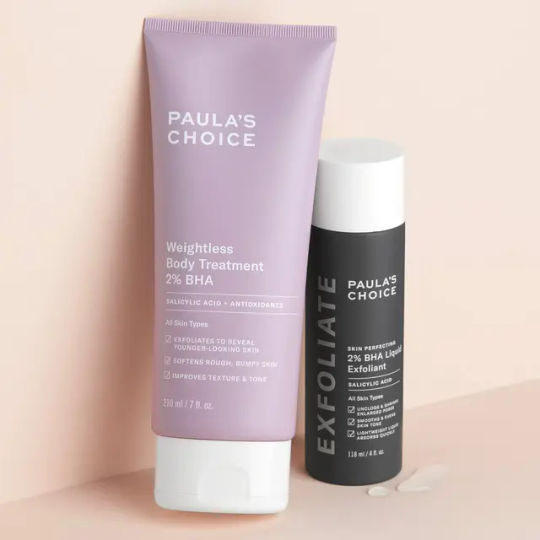
0 notes
Text
Using Face Mapping to Address Breakouts
One of the most exciting aspects of the world of skin care is that it’s constantly evolving. However, sometimes what’s most interesting is the updated data that the past actively informs and helps develop. In recent years, advances in modern science bolstered the use of skin care ingredients commonly used in traditional medicine, including green tea, bakuchiol and Centella asiatica.

Beyond ingredients, traditional skin care and health practices are also garnering more attention. Skin mapping, also called face mapping, is one of these traditional practices suddenly finding itself amid a revival. But what is skin mapping? How does one practice skin mapping? Is it the solution to your breakout-related skin concerns? Let’s travel back in time, dip into the present and look to the future to explain face mapping and see if it can help you tackle your skin concerns.
What is face mapping and history of Chinese face mapping
Face mapping, also called Chinese face mapping, is an ancient practice dating back more than 3,000 years. Known as mien shiang – literally “face reading” – this artform focuses on determining a person’s traits, character and even physical health based on an analysis of their face (1). Central to mien shiang is the concept of qi, the flow of energy throughout the body and how it impacts everything from personality to internal ailments.
In mien shiang, each part of the face corresponds to an area of the body – for instance, the forehead is linked to the digestive system, the eyebrows to the liver and so on (2). The idea is that if there is an issue presented on the face, tackling a qi imbalance in its corresponding body part will solve the problem. While one can apply this to several different facial issues, it's currently popular when trying to track down the source of acne breakouts.
How accurate is face mapping?
So just how accurate is face mapping? Can the imbalances in other parts of your body cause your breakouts?
From a Western medical perspective, we just don’t know definitively... yet. The fact is that there isn’t the depth and breadth of peer-reviewed research behind Traditional Chinese Medicine (TCM) at this stage to know with certainty (3). That isn’t to say that there isn’t value in pursuing mien shiang to see if it can help reduce breakouts, especially since focusing on whole body health always has value. If anything, it’s a good jumping off point to start your search for solutions. And as always, the Paula’s Choice Research Team keeps an eye on emerging information, and we’ll break any future developments in this arena!
How does face mapping for acne work?
Breakouts on different parts of the face can have different causes. Not all bumps and clogs have the same origin story. This means there might be different ways to tackle breakouts depending on their location. So yes, what might be causing acne on your hairline could be something apart from what causes acne on your cheeks!
Blemish locations for face mapping
It’s time to break down how you can use the principles of face mapping to get a better understanding of what might be causing acne breakouts and how to treat them. First, let’s get some general information out of the way about overarching factors that can cause acne:
Genetics – for many people acne is simply hereditary, meaning their acne is difficult to avoid, but treatment is possible (4).
Stress – if you’ve heard that stressing out is bad for your skin, it’s true. Stress can lead to acne-causing triggers inside the body flaring up, meaning that if you’re frazzled, you’re more likely to have a breakout.
Diet – in some cases, food sensitivities can set off acne breakouts. If you happen to notice that after you consume certain foods you’re more prone to pimples, it might be worthwhile to consider altering your diet. Foods with a high glycemic index and dairy are the most frequent culprits (5, 6).
Hormones – there is a strong correlation between hormone fluctuations and acne, which is why it is so prevalent among teens who are experiencing age-related hormone changes (7). Other hormone changes, like those experienced during one’s menstrual cycle, can also affect the development of acne (8).
Now, let’s look at specific breakout areas and their proposed causes and solutions.
Hairline and forehead
Breakouts along the hairline and on the forehead often have causes that go beyond just hormones and genetics. In Chinese face mapping, breakouts on the forehead are a sign of issues with the digestive system, liver, gallbladder or stomach.
Modern research and experience demonstrate that hair styling products – like gels, waxes and pomades – have thickening agents that help hold hair, but can also clog pores, especially if your skin is already naturally oily (9). These occlusive products can lead to breakouts even if they’re not directly applied to skin. For instance, if you have bangs, the hair that touches your forehead can transfer these products to the skin there. This hair product transfer can also cause acne breakouts on the neck!
Headwear, including hats, hair scarves and headbands can also rub up against skin, triggering irritation that leads to acne breakouts.
For many people it isn’t preferable to completely forego hair styling products or skip out on head gear altogether just for the sake of preventing breakouts. Don’t worry, we have a step-by-step routine (including hair washing tips!) to get hairline and forehead breakouts under control.
Eyebrows
Acne inside eyebrows isn’t the most common type of acne, but when it happens it’s painful and sometimes tricky to handle. In mien shiang, skin issues within the eyebrows, or the space between the eyebrows, might mean issues with the liver.
As with hairline and forehead acne, investigating your habits in that area could reveal what’s going on. A 2017 study found that improper hygiene practices tied to cosmetic eyebrow grooming can lead to the development of bacterial infections – including acne – that appear in the eyebrows (10).
If an esthetician grooms your eyebrows, talk to your provider about the hygiene practices at their shops. If you pluck or tweeze at home, make sure all your tools are disinfected, and if you still have issues, consider swapping from thick brow pomades and waxes to lighter-weight brow gels!
Nose and cheeks
For most people who experience acne breakouts, the nose and cheeks are involved, whether it’s teen acne or adult acne. According to face mapping, issues with skin on the nose and cheeks can be a sign of stomach or heart-related problems.
There’s a straightforward reason why clogs are common in these areas – the pores on our noses and cheeks tend to secrete more sebum (oil) than other parts of the face (11). If you have combination skin, you know this all too well; it’s part of that dreaded T-zone where oil stands out the most. Even if your skin is dry, it’s not unusual for an oil-related shine to develop on your nose and cheeks.
The key then is to try to reduce or balance oil production in these areas. BHA exfoliants help accomplish this as they’re oil-soluble and work deep down inside pores to unclog them. They also have soothing properties that can reduce irritation that can lead to future breakouts – win-win!
Following general hygiene best practices can help nose and cheek acne as well. For instance, washing pillowcases regularly and avoiding touching your face frequently can help keep some acne-causing bacteria from accumulating on your face (12).
Pressure from materials constantly rubbing against cheek and nose skin – known as acne mechanica - can also create inflammation that spurs acne breakouts on the nose and cheeks (13). One of the most prevalent forms of acne mechanica is “maskne,” which happens among healthcare workers required to wear masks for long periods of time. This form of acne is also prevalent amongst many members of the public due to mask wearing to help protect against COVID-19.
Chin and jawline
Many of the causes of acne on other parts of the face apply to the chin and jawline as well. Just like your cheeks and nose, your chin and jawline are rich in sebaceous glands that produce oil that can lead to breakouts. Acne mechanica from frequent use of jawline headsets and cell phones is another culprit (14).
According to face mapping, imperfections along the chin and jaw might be a sign of hormonal or reproductive issues, which, research reflects! A prominent cause of breakouts along the jawline and chin can be a condition known as polycystic ovary syndrome, or PCOS (15). Much like how fluctuating hormone levels during puberty can trigger acne-causing factors, the same is true for PCOS, which often results in painful cystic acne. The onset of the monthly menstrual cycle is yet another trigger for many people who experience chin and jawline breakouts (16).
If you suspect hormonal changes are behind chin and jawline acne, consult with a dermatologist or doctor, who can suggest effective medical treatments that can help alleviate the problem.
Using face mapping for breakouts
As we’ve seen, combining updated data with the principles of face mapping can go a long way toward helping identify – and tackle – acne breakouts in distinct areas of the face. In addition to the above tips for battling your breakouts, in all cases – no matter the cause – it's important to adopt a gentle yet effective skin care routine for acne that incorporates proven acne fighters like salicylic acid (AKA BHA) and benzoyl peroxide and skips out on harsh, irritating ingredients that can make breakouts worse.
Armed with this information, you’re ready to fight your acne, no matter where it might show up!
Learn more about acne
0 notes
Text
Acne: A Common Skin Concern and Paula's Choice Solution
Acne is a prevalent skin condition affecting people of all ages, but it's particularly common during adolescence. Characterized by pimples, whiteheads, blackheads, and sometimes cysts, acne can significantly impact self-esteem and quality of life. While numerous acne treatments are available, finding the right approach can be challenging. This is where Paula's Choice steps in, offering a science-based skincare regimen to combat acne effectively.
Understanding Acne Acne occurs when hair follicles become clogged with oil and dead skin cells. Bacteria thrive in this environment, leading to inflammation and the development of pimples. Several factors contribute to acne, including hormonal changes, genetics, and diet. While it's often considered a teenage problem, acne can persist into adulthood for many.
The Paula's Choice Approach Paula's Choice stands out for its commitment to evidence-based skincare. The brand focuses on using effective ingredients with a proven track record in treating acne. Their philosophy centers around gentle yet effective products that address the root causes of acne without irritating the skin.
Key ingredients commonly found in Paula's Choice acne products include:
Salicylic acid: This beta-hydroxy acid exfoliates the skin, unclogs pores, and reduces inflammation. It is particularly effective in treating blackheads and whiteheads.
Niacinamide: This form of vitamin B3 helps to regulate oil production, improve skin texture, and reduce redness.
Azelaic acid: This gentle exfoliant has antibacterial and anti-inflammatory properties, making it suitable for sensitive skin.
Building an Effective Acne Skincare Routine Paula's Choice offers a range of products to suit different skin types and acne severities. A typical acne skincare routine might include the following steps:
Cleanser: Choose a gentle cleanser that removes oil and dirt without stripping the skin. Paula's Choice offers several options, including foaming and gel cleansers.
Exfoliant: Incorporate a salicylic acid-based exfoliant to unclog pores and prevent breakouts.
Treatment: Apply a benzoyl peroxide or niacinamide-based treatment to target acne-prone areas.
Moisturizer: Hydrating the skin is essential, even for oily skin. Look for oil-free, non-comedogenic moisturizers.
Sunscreen: Protect your skin from the sun with a broad-spectrum SPF of 30 or higher.
Consistency is key when treating acne. It may take several weeks to see significant improvement. Avoid touching your face excessively, as this can spread bacteria and worsen acne.
While Paula's Choice products can be highly effective, it's important to consult a dermatologist for severe or persistent acne. They can provide personalized guidance and prescribe additional treatments if necessary.
In conclusion, acne can be a frustrating condition, but with the right approach, it can be managed effectively. Paula's Choice offers a science-based solution that addresses the underlying causes of acne without harsh ingredients. By incorporating Paula's Choice products into a consistent skincare routine, you can achieve clearer, healthier skin.
0 notes
Text
Salicylic Acid For Skin - Paula's Salicylic Acid Products
Achieve a clear, glowing complexion with Paula's bha salicylic acid for face and skin. Explore our curated selection of salicylic acid products at Official Online India Store
Paula's Choice offers a star product for those seeking a solution for clogged pores, blackheads, and uneven skin tone: the Skin Perfecting 2% BHA Liquid Exfoliant. This leave-on exfoliant uses salicylic acid, a beta hydroxy acid (BHA), to gently remove dead skin cells and unclog pores. Unlike harsh scrubs, it's suitable for daily use on all skin types, even sensitive ones.
The key lies in the product's formulation. With a pH level of 3.2-3.8, it's optimal for BHA to work effectively. Plus, it's fragrance-free, non-irritating, and cruelty-free. This exfoliant goes beyond just clearing pores. It helps reduce fine lines and wrinkles, revealing smoother, younger-looking skin.
While Paula's Choice offers other salicylic acid products like cleansers, the 2% BHA Liquid Exfoliant is their hero. It's a gentle yet effective way to achieve clearer, brighter, and more radiant skin. However, remember to start slow, especially if you have sensitive skin. Apply a dime-sized amount daily and watch your skin transform.



0 notes
Text
Paula's Choice Skin Perfecting 2% BHA (Salicylic Acid) Liquid Exfoliant
Paula's Choice Skin Perfecting 2% BHA Liquid Exfoliant is a cult-favorite for a reason. This leave-on exfoliant uses salicylic acid, a beta hydroxy acid (BHA), to tackle common skin concerns.
The 2% salicylic acid gently removes dead skin cells, unclogging pores and preventing breakouts like blackheads and acne. It can also minimize pore size and even skin tone. While advertised to address wrinkles, salicylic acid's primary focus is exfoliation.
This lightweight formula absorbs quickly and is suitable for oily and acne-prone skin. Paula's Choice recommends starting slow, using it twice a week and gradually increasing to twice daily.
As with any exfoliant, be sure to moisturize as salicylic acid can cause dryness. Those with sensitive skin should patch test first.
Paula's Choice Skin Perfecting 2% BHA Liquid Exfoliant is a popular choice for those seeking a gentle yet effective way to exfoliate and improve their complexion.
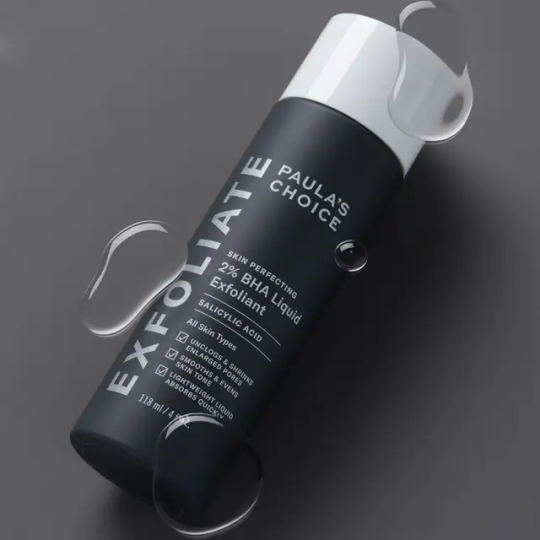
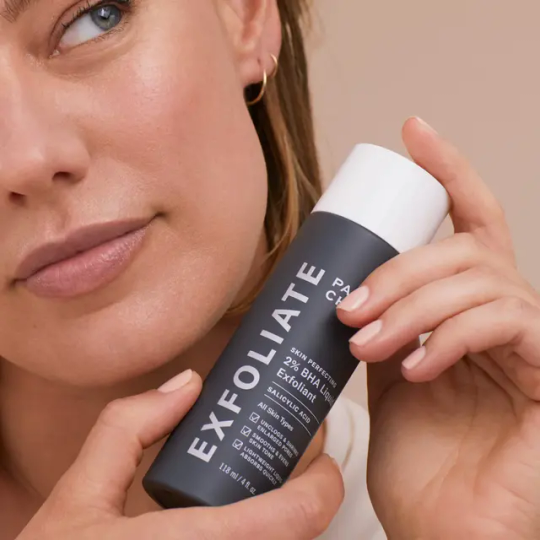
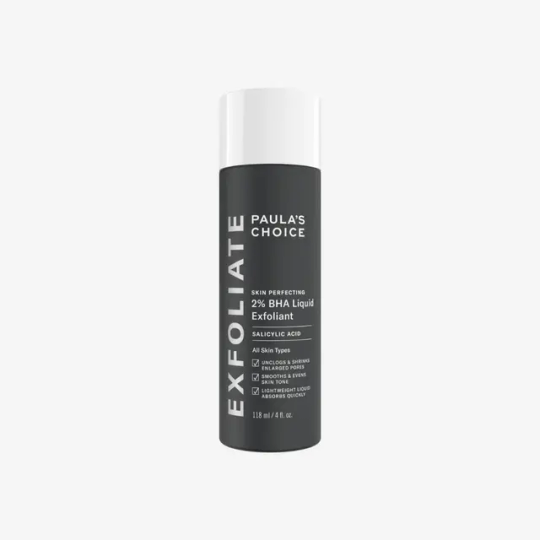
0 notes
Text
Paula's Choice Exfoliant - Award Winning Exfoliant For Face
Exfoliation is a crucial step in any skincare routine, and Paula's Choice offers a range of exfoliant for face to target various skin concerns. Whether you're struggling with blackheads, uneven texture, or simply want to brighten your complexion, Paula's Choice has an exfoliant to suit your needs.
Paula's Choice prides itself on science-backed formulations, and their exfoliants are no exception. They offer both chemical and physical exfoliants, allowing you to choose the method that best suits your skin type.
Chemical exfoliants, like those containing AHAs (alpha hydroxy acids) or BHAs (beta hydroxy acids), work by gently dissolving dead skin cells. Paula's Choice offers various AHA and BHA options, with different strengths suitable for sensitive or acne-prone skin.
For those who prefer physical exfoliation, Paula's Choice offers gentle scrubs formulated with ultra-fine polishing particles. These scrubs buff away dead skin without irritating even the most delicate skin.
Paula's Choice exfoliants are also known for being fragrance-free and non-comedogenic, meaning they won't clog your pores. This makes them ideal for those with sensitive skin or acne concerns.
With a variety of formulations and ingredients to choose from, Paula's Choice exfoliants offer an effective way to achieve smoother, brighter, and healthier-looking skin. Remember, it's important to consult a dermatologist before incorporating a new product into your routine, especially if you have sensitive skin.


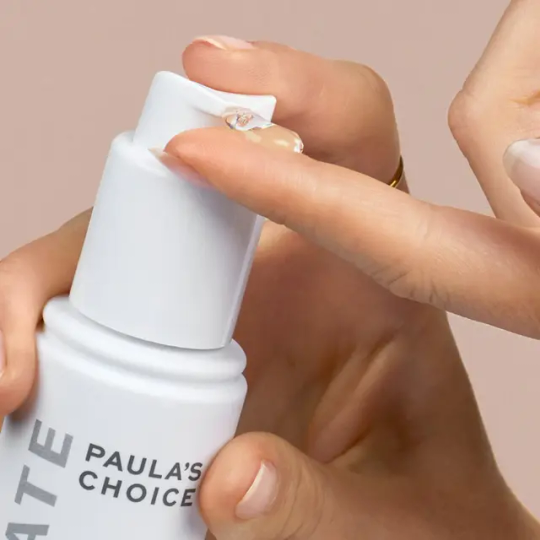

0 notes